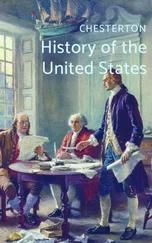Willis Abbot - The Naval History of the United States. Volume 2
Здесь есть возможность читать онлайн «Willis Abbot - The Naval History of the United States. Volume 2» — ознакомительный отрывок электронной книги совершенно бесплатно, а после прочтения отрывка купить полную версию. В некоторых случаях можно слушать аудио, скачать через торрент в формате fb2 и присутствует краткое содержание. Жанр: foreign_antique, foreign_prose, Историческая проза, на английском языке. Описание произведения, (предисловие) а так же отзывы посетителей доступны на портале библиотеки ЛибКат.
- Название:The Naval History of the United States. Volume 2
- Автор:
- Жанр:
- Год:неизвестен
- ISBN:нет данных
- Рейтинг книги:5 / 5. Голосов: 1
-
Избранное:Добавить в избранное
- Отзывы:
-
Ваша оценка:
- 100
- 1
- 2
- 3
- 4
- 5
The Naval History of the United States. Volume 2: краткое содержание, описание и аннотация
Предлагаем к чтению аннотацию, описание, краткое содержание или предисловие (зависит от того, что написал сам автор книги «The Naval History of the United States. Volume 2»). Если вы не нашли необходимую информацию о книге — напишите в комментариях, мы постараемся отыскать её.
The Naval History of the United States. Volume 2 — читать онлайн ознакомительный отрывок
Ниже представлен текст книги, разбитый по страницам. Система сохранения места последней прочитанной страницы, позволяет с удобством читать онлайн бесплатно книгу «The Naval History of the United States. Volume 2», без необходимости каждый раз заново искать на чём Вы остановились. Поставьте закладку, и сможете в любой момент перейти на страницу, на которой закончили чтение.
Интервал:
Закладка:
On the night of the 7th of August the wind came up to blow, and the rising waves soon demonstrated the uselessness of schooners for purposes of war. At early dawn a fierce gust of wind caused the schooners "Hamilton" and "Scourge" to careen far to leeward. Their heavy guns broke loose; then, crashing down to the submerged beams of the schooners, pulled them still farther over; and, the water rushing in at their hatches, they foundered, carrying with them to the bottom all their officers, and all but sixteen of the men. This loss reduced Chauncey's force to more of an equality with that of the British; yet for two days longer the manœuvring continued, without a shot being fired. On the night of the 10th the two squadrons formed in order of battle, and rapidly approached each other. At eleven o'clock a cannonade was begun by both parties, and continued for about an hour; though the shot did little material damage on either side. At midnight the British, by a quick movement, cut out and captured two American schooners, and sailed away, without suffering any damage.
A month then intervened before the next hostile meeting. In his despatches to his superior authorities, each commander stoutly affirms that he spent the time in chasing the enemy, who refused to give him battle. Whether it was the British or the Americans that avoided the battle, it is impossible to decide; but it seems reasonable to believe, that, had either party been really determined upon bringing matters to an issue, the other could have been forced into giving battle.
On the 11th of September, the enemies met near the mouth of the Genesee River, and exchanged broadsides. A few of the British vessels were hulled, and, without more ado, hauled off into the shallow waters of Ambert Bay, whither the Americans could not follow them. Then ensued another long period of peace, broken at last by a naval action in York Bay, on the 28th, in which the British were worsted and obliged to fly, though none of their ships were destroyed or captured. On Oct. 2, Chauncey accomplished a really important work, by capturing five British transports, with two hundred and sixty-four men, seven naval and ten army officers. With this achievement, the active work of the Ontario squadron ended for the year, as Chauncey remained blockading Yeo at Kingston, until the approach of winter rendered that precaution no longer necessary.
The navigable season of 1814 opened with the British first upon the lake. The long winter had been employed by the belligerents in adding to their fleets; a work completed first by Yeo, who put out upon the lake on the 3d of May, with eight square-rigged vessels, of which two were new frigates. The Americans had given up their unseaworthy schooners, and had a fleet of eight square-rigged vessels nearly ready, but still lacking the cordage and guns for the three new craft. Yeo thus had the lake to himself for a time, and began a vigorous campaign by an attack upon Oswego, aided by a large body of British troops. Succeeding in this enterprise, he set sail for Sackett's Harbor, and, taking up his position just outside the bar, disposed his vessels for a long and strict blockade. This action was particularly troublesome to the Americans at that time; for their new frigates were just ready for their guns and cables, which could not be brought overland, and the arrival of which by water was seemingly prevented by the blockade. It was in this emergency that the plan, already described, for transporting the great cable for the "Niagara" overland, on the backs of men, was decided upon. Yeo remained on guard at the mouth of the harbor until the 6th of June, then raised the blockade, and disappeared down the lake. For six weeks the Americans continued working on their fleet, to get the ships ready for service. During this time the British gunboat "Black Snake" was brought into the harbor, a prize to Lieut. Gregory, who had captured it by a sudden assault, with a score of sailors at his back. On the 1st of July, the same officer made a sudden descent upon Presque Isle, where he found a British vessel pierced for fourteen guns on the stocks, ready for launching. The raiders hastily set fire to the ship, and retreated before the enemy could get his forces together.
It was July 31 before Chauncey set sail from Sackett's Harbor. He now had under his command a squadron of eight vessels, two of which were frigates, two ship sloops-of-war, and eight brig-sloops of no mean power. Yeo had, to oppose this force, a fleet of no less respectable proportions. Yet, for the remainder of the year, these two squadrons cruised about the lake, or blockaded each other in turn, without once coming to battle. As transports, the vessels were of some service to their respective governments; but, so far as any actual naval operations were concerned, they might as well never have been built. The war closed, leaving the two cautious commanders still waiting for a satisfactory occasion for giving battle.
Such was the course of the naval war upon the Great Lakes; but the thunder of hostile cannon and the cheers of sailors were heard upon yet another sheet of fresh water, before the quarrel between England and the United States was settled. In the north-east corner of New York State, and slightly overlapping the Canada line, lies Lake Champlain, – a picturesque sheet of water, narrow, and dotted with wooded islands. From the northern end of the lake flows the Richelieu River, which follows a straight course through Canada to the St. Lawrence, into which it empties. The long, navigable water-way thus open from Canada to the very heart of New York was to the British a most tempting path for an invading expedition. By the shore of the lake a road wound along; thus smoothing the way for a land force, whose advance might be protected by the fire of the naval force that should proceed up the lake. Naturally, so admirable an international highway early attracted the attention of the military authorities of both belligerents; and, while the British pressed forward their preparations for an invading expedition, the Americans hastened to make such arrangements as should give them control of the lake. Her European wars, however, made so great a demand for soldiers upon Great Britain, that not until 1814 could she send to America a sufficient force to undertake the invasion of the United States from the north. In the spring of that year, a force of from ten thousand to fifteen thousand troops, including several thousand veterans who had served under Wellington, were massed at Montreal; and in May a move was made by the British to get control of the lake, before sending their invading forces into New York. The British naval force already in the Richelieu River, and available for service, consisted of a brig, two sloops, and twelve or fourteen gunboats. The American flotilla included a large corvette, a schooner, a small sloop, and ten gunboats, or galleys, propelled with oars. Seeing that the British were preparing for active hostilities, the Americans began to build, with all possible speed, a large brig; a move which the enemy promptly met by pushing forward with equal energy the construction of a frigate. While the new vessels were on the stocks, an irregular warfare was carried on by those already in commission. At the opening of the season, the American vessels lay in Otter Creek; and, just as they were ready to leave port, the enemy appeared off the mouth of the creek with a force consisting of the brig "Linnet" and eight or ten galleys. The object of the British was to so obstruct the mouth of the creek that the Americans should be unable to come out. With this end in view, they had brought two sloops laden with stones, which they intended to sink in the narrow channel. But, luckily, the Americans had thrown up earthworks at the mouth of the river; and a party of sailors so worked the guns, that, after much manœuvring, the British were forced to retire without effecting their purpose.
Читать дальшеИнтервал:
Закладка:
Похожие книги на «The Naval History of the United States. Volume 2»
Представляем Вашему вниманию похожие книги на «The Naval History of the United States. Volume 2» списком для выбора. Мы отобрали схожую по названию и смыслу литературу в надежде предоставить читателям больше вариантов отыскать новые, интересные, ещё непрочитанные произведения.
Обсуждение, отзывы о книге «The Naval History of the United States. Volume 2» и просто собственные мнения читателей. Оставьте ваши комментарии, напишите, что Вы думаете о произведении, его смысле или главных героях. Укажите что конкретно понравилось, а что нет, и почему Вы так считаете.











![Hubert Bancroft - The Native Races [of the Pacific states], Volume 5, Primitive History](/books/749157/hubert-bancroft-the-native-races-of-the-pacific-s-thumb.webp)
![Hubert Bancroft - The Native Races [of the Pacific states], Volume 1, Wild Tribes](/books/750126/hubert-bancroft-the-native-races-of-the-pacific-s-thumb.webp)